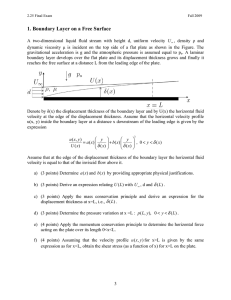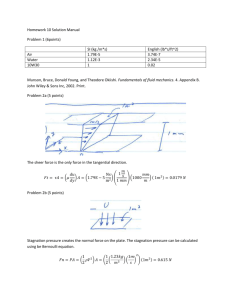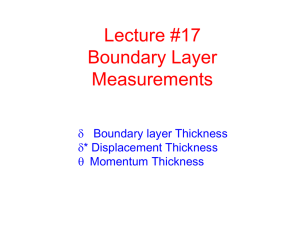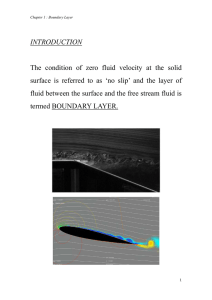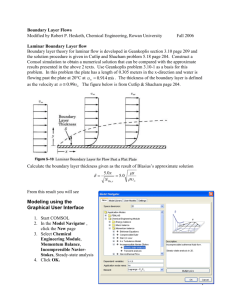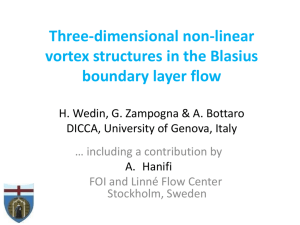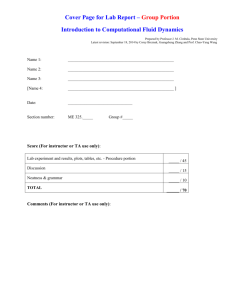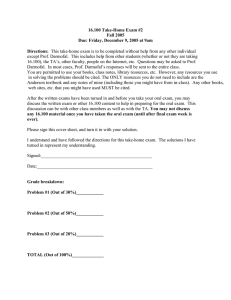Application of Karman`s Method to Laminar Boundary Layer over a
advertisement
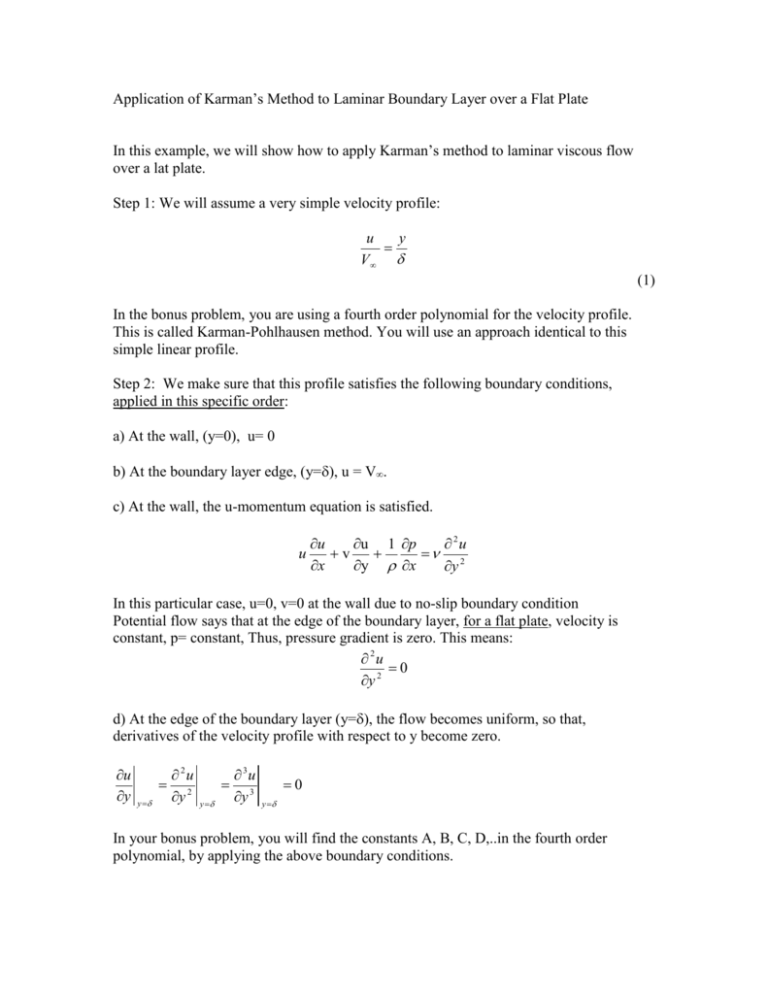
Application of Karman’s Method to Laminar Boundary Layer over a Flat Plate In this example, we will show how to apply Karman’s method to laminar viscous flow over a lat plate. Step 1: We will assume a very simple velocity profile: y u V (1) In the bonus problem, you are using a fourth order polynomial for the velocity profile. This is called Karman-Pohlhausen method. You will use an approach identical to this simple linear profile. Step 2: We make sure that this profile satisfies the following boundary conditions, applied in this specific order: a) At the wall, (y=0), u= 0 b) At the boundary layer edge, (y=), u = V∞. c) At the wall, the u-momentum equation is satisfied. u u u 1 p 2u v 2 x y x y In this particular case, u=0, v=0 at the wall due to no-slip boundary condition Potential flow says that at the edge of the boundary layer, for a flat plate, velocity is constant, p= constant, Thus, pressure gradient is zero. This means: 2u 0 y 2 d) At the edge of the boundary layer (y=), the flow becomes uniform, so that, derivatives of the velocity profile with respect to y become zero. u y y 2u y 2 y 3u y 3 0 y In your bonus problem, you will find the constants A, B, C, D,..in the fourth order polynomial, by applying the above boundary conditions. In our case, our simple linear profile does not have enough constants to satisfy all of these conditions. Surprisingly, it satisfies most of it, except that the first derivative of u at the edge does not go to zero. Step 3: Integrate the assumed profile to find momentum thickness , displacement thickness *, shape factor H. Also find the skin friction coefficient Cf. We show how to do this for our simple example. You will do similar things for your assumed fourth order profile, after A, B, C, D, etc. have been found. (In your case, for flat plate, the parameter =0) and may be dropped after you have found A, B, C, etc. y y y y2 u 1 dy 1 dy y ue 2 y 0 2 y 0 0 * y u u y 0 e H y u 1 dy ue 0 y y2 y y3 1 dy 2 2 3 y 0 6 * 3 2 6 wall Cf u y V V y 0 wall 1 u 2 2 e 2 1 V 2 V 2 In the bonus problem, the integrals will be long (grin..) but you should eventually get simplified expressions for the various quantities. Check the dimensions. Displacement thickness and momentum thickness should have dimensions of distance, H and Cf will be non-dimensional. Step 4: Throw all the stuff we got in step (3) into the Von Karman Integral momentum equation: Cf d 1 du e (2 H ) dx u e dx 2 Here, due/dx=0, because at the edge of the boundary layer, for flat plates, ue equals free stream velocity. We get: d C f dx 2 Plug in expressions for and Cf from step 3. 1 d 6 dx V . Bring d to left, other stuff to the right, integrate: d 6 V dx 2 2 6 x V 12x x 3.464 V V Compare this to what Blasius got: His constant was 5, rather than our 3.464. This is a 50% error. Next find displacement thickness and momentum thickness: * 2 6 H 3 1.732 0.594 x V x V * 1.72 Compare these to what Blasius got. 0.664 x V x V H 1.72 / 0.664 2.58

